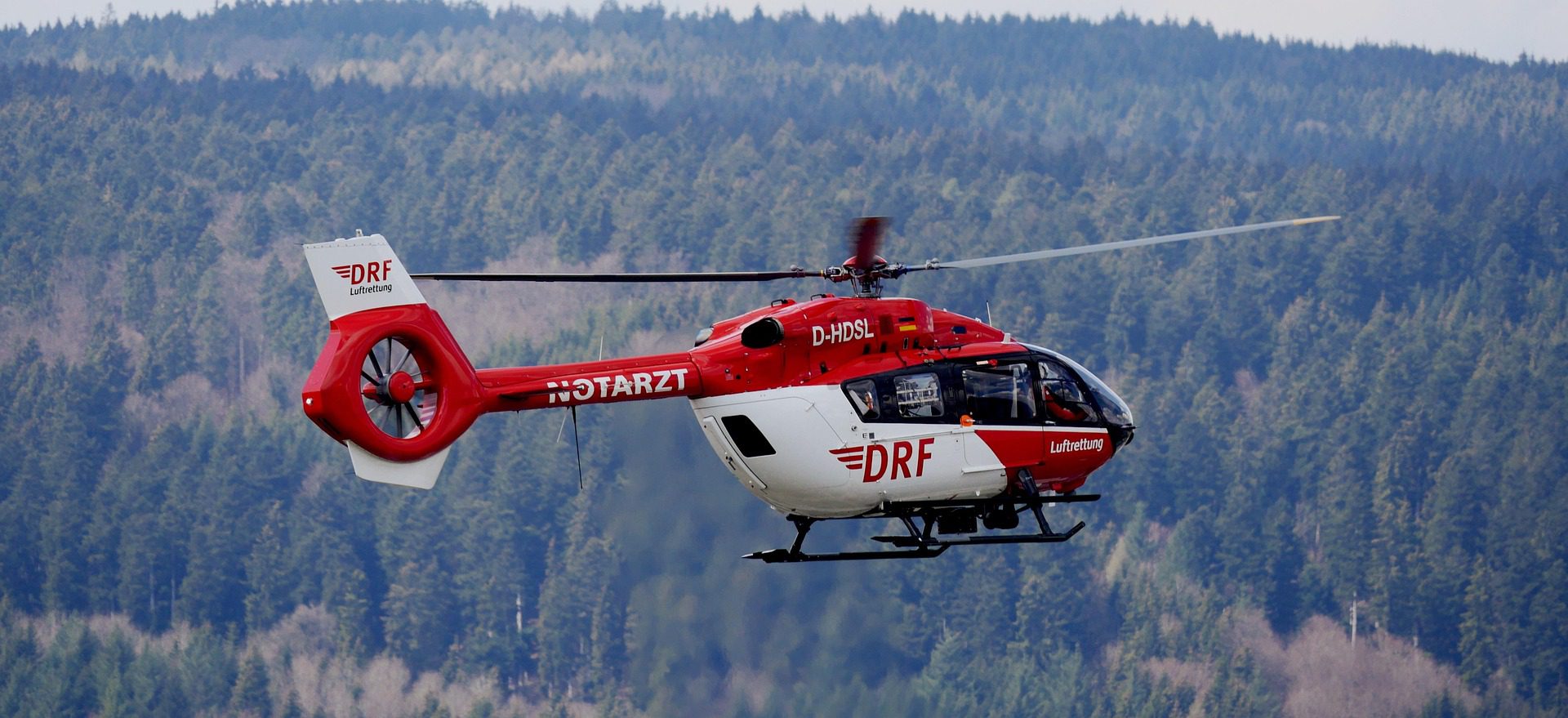In crisis healthcare in nowadays and age, there is probably not that many services that have as great a potential to save a life as an air ambulance. For humans facing crisis sickness events in isolated locations, where there’s no ground way that can reach them to deliver life-saving care at urban hospitals, air evacuation provides the only acceptable bridge between the forces of survival and disaster. Understanding how such missions operate, what situations justify them, and how specialized vendors like an Airmed air ambulance coordinate such complex rescues helps families, organizations, and policymakers make informed choices during high-pressure moments.
1. Recognizing the role of an air ambulance
An air ambulance is a kind of aerial intensive-care unit: It’s a medically equipped aircraft containing specially trained staff who can keep someone alive while they travel through the air. These planes and helicopters operate as airborne emergency rooms, keeping close watch on — and sometimes stabilizing — patients while flying them in for care. They are stocked with ventilators, cardiac monitors, and infusion pumps that help keep patients alive even while they are traveling across oceans or over mountain ranges.
In contrast to ground-based operations, these missions are staffed by multifaceted teams — paramedics, emergency specialists, nurses and respiratory therapists — who function within tight medical-protocol boundaries. Each flight involves precision planning, ensuring all medical needs synchronize with aviation logistics, altitude constraints, and hospital at the finish-destination.
2. When to reach air ambulance support
Certain moments leave no room for hesitation. It becomes a need to call in reach air ambulance teams when geography – or time, for that matter – get in the way of what very ordinary ambulances might be able to accomplish. Scenarios often include:
- Serious accidents in woods, northern areas, or isolated industrial sites
- Emergent hospital-to-hospital transfers for immediate stabilization
- During disasters, such as tornados or earthquakes, when roads are blocked by collapse or flood
- Global healthcare repatriations: getting injured travellers home safely
These missions compress hours into minutes, transforming unreachable territories into accessible corridors of care. As an illustration, in Canada as well as other countries, coordinated air response often makes the difference between treatment starting in time to save life or limb.
3. Inside a modern air ambulance service
A professional air ambulance service is more than just a ride — it is an outsourced medical mission. Five Stages to Follow: Each mission is divided into five stages:
- Clinical assessment – is air transport indicated?
- Mission logistics: check-ins on permits, safety of weather and airport collaboration
- Surface-air transfer – transport the patient to the aircraft without jeopardising safety
- In-flight observations – keeping normal signs of life during the trip
- Hospital handover – designing continuity and safety into the system when they get there
This requires sustained coordination between dispatch facilities, hospital personnel and onboard teams. The goal is continuity, every kilometer of airspace turned into controlled, medically protected ground.
4. Specialized missions by Airmed air ambulance
Once again, Canada is a good illustration here—the Canadian rescue ecosystem, Airmed air ambulance is one of the well-established aid suppliers. Their operations on multi-level are able to align themselves with the variety of the profiles of recipients:
a) Pre-hospital air response
For the inhabitants, travellers, and workers of Quebec’s vast territories, pre-hospital air deployment allow for pull outs from cabins, northern sectors or wilderness trails. Each minute saved can make the difference between surviving and suffering irreversible harm following trauma or cardiac arrest.
b) Inter-facility clinical transfer
Clinics throughout Canada rely on this service to transport recipients between units of care—whether they’re moving a newborn to a pediatric ICU or shifting a trauma case to a center with specialized resources available. Treatment throughout the flight ensures there is no break brought about by the transfer on a standard vehicle.
c) International repatriation
When illness or injury hits while travelling, coordination teams handle everything: from discharge from an in-country hospital, to nursing on a stretcher to flying the patient onto Canadian soil. Sometimes they fly by medical aircraft, other times by escort on a commercial flight. Either way, multilingual crews and turnkey logistics deliver dignified, medically secure returns.
5. Core advantages of airborne therapeutic transport
Air evacuations are often a life-or-death decision: For those who choose to take an air evacuation over its land-based alternative, there can be tangible — sometimes life-saving — costs and benefits at play.
Speed: distance no longer defines survival odds
Equipment equivalence: sophisticated monitors and defibrillators parallel hospital standards
Continuous observation: licensed medical staff monitor vitals all the time
Comfort and stability: vibration will be reduced in cabins held at a constant temperature
Public-health agencies have known for decades that quicker response times are directly linked to better chances of recovery in the aftermath of fatal trauma. For complex monitoring, an air ambulance is less a luxury than it is a medical necessity.
6. Who relies on air ambulance solutions
The recipients are varied in these missions:
- Injured or seriously ill persons in Canada and abroad
- Insured travelers with emergency evacuation coverage
- Isolated entities: Corporations and government offices working in remote areas
- Urgent and safe transport of uninsured patients
Some providers will even offer a medical-escort service on commercial flights for stable patients. This flexibility is an example of the ability of air medicine to respond to the unique medical and financial situations individuals face.
7. Why expertise and certification matter
Not all pilots are held to the same clinical-aviation standards. Licensed emergency carriers keep aircraft in medical-only configuration and ensure that equipment will be tested on a regular basis and employees are trained in accordance with advanced-care protocol.
Airmedic is still the only air carrier in Québec with exclusive certification for urgentmedical missions. Redundant just-in-case deployability, along with a fresh eye for patient needs, makes such teams invaluable partners to hospitals, insurers and rescue agencies.
8. Real-world scenarios and testimonials
And accounts from recovered patients demonstrate the benefit of airborne interventions: an elderly traveler pulled out of a forest with a broken hip; a critical flight home from Spain, repatriation in the midst of contagion; an infant’s life-saving transfer to a neonatal center. These are the stories that remind us that at every flight’s end there lies a network of human relationships; families reunited, hope rekindled in mid-air.
9. In Summary
By choosing an air ambulance you are choosing immediate, medically accompanied care which is logistically seamless. Recent human history knows many examples: from remote areas to international emergencies, these missions combine technology, aviation and humanity into a unified response. Be it labelled emergency evacuation or international repatriation, airborne medicine confirms that destiny is not the province of distance.
They are available 24/7 for immediate coordination or professional consultation via a licensed-provider staffed contact center, so they’re ready as soon as every second counts.
FAQ
When would you need an air ambulance?
There is no substitute for an air ambulance during medical emergencies when ground routes cannot provide quick or safe passage. For instance, could be an urgent trauma case in a remote area, patients needing hospital transfer critically or transportation during all-natural disaster evacuations on the blocked roadways. It also includes international repatriation for Canadians who are injured or ill abroad.
What is the purpose of the air ambulance?
The goal is to extend constant medical monitoring and level of care that a patient receives during the flight, distance being simply bridged between patients and effective treatment facilities. These services simulate conditions that would be found in an intensive-care unit, midair, and mitigate potential dangers of long ground trips.
Who does the air ambulance help?
Air medical missions help various individuals affected by a serious health occasion — the lone worker or traveler to the patient requiring specialized care unavailable at an originating hospital. They are also propping up insurers, embassies and humanitarian organizations that oversee emergency transport across borders.
What are the two types of air ambulance?
Two major formats apply: helicopters operating over regions or in inaccessible locales, as well as fixed-winged aircraft for intercity and international trips. They’re both governed by the same medical standards; it’s all a range and logistics thing.











